A 12v battery charger is a device everyone eventually needs at some time, often for accidentally leaving a door ajar on a car and running a battery dead. But do you really need to spend hundreds of dollars on brand name charger like CTEK, or is just a big conspiracy?
Let’s Find Out!
Purchasing Experience
In Typical ‘Deepest Darkest China’ fashion, we sort the list on Lazada to cheapest and start searching.
Not before we long we find the ’12V20Ah Battery Charger, smart battery charger for cars and motorcycles’ from the most trustworthy of sellers ‘Air fryer ShopAAA‘ for just 107 baht (USD$3.10) delivered.
I’ve never seen a battery charger measured in amp hours, but China Marketing 101 teachers you, bigger number is better.

Technical Specifications
Model: 12V2A (20AH)
Product Model: DC-12V
Input voltage: AC-110-220V
Output power: AC-28W
Output voltage: DC 13.8V-15.5V
Output current: DC 2-3A
Executive standard: T/TCDZ0001-2019
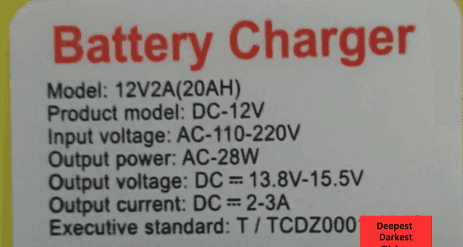
First Impressions
Eagerly unpacking the charger we are presented with a yellow box with leads on both ends. 4 individually lit LED indicators showing charging status, decent quality ~45cm copper coated alligator leads and for our model a similarly sized ~45cm AC lead with an EU plug.
In terms of construction quality, it feels just like a $3.10 battery charger would feel like and weigh.
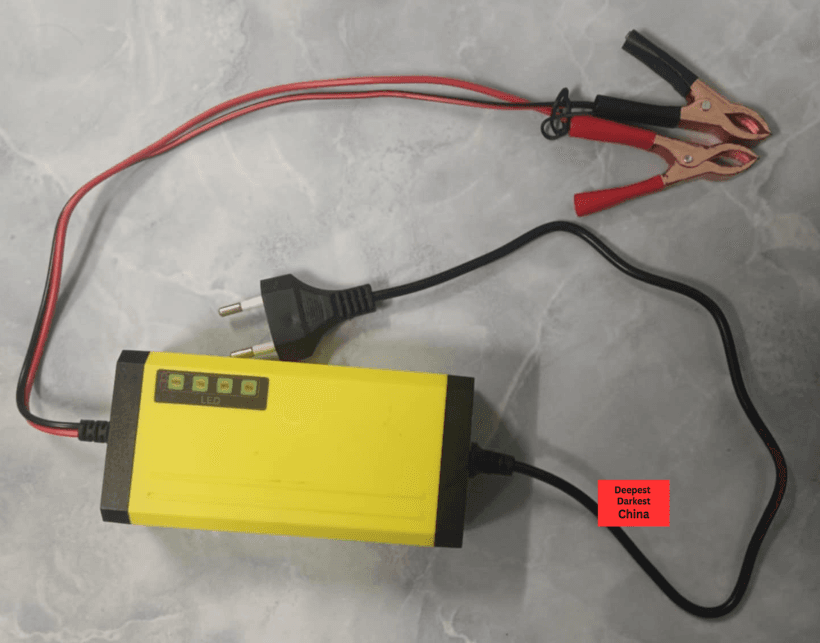
On the rear we see a sticker with the speciation’s and some basic instructions. The manufacturer or distributor appears to be Tiachang Jinjie Electronics Co., Ltd which lists this model for $1.80.
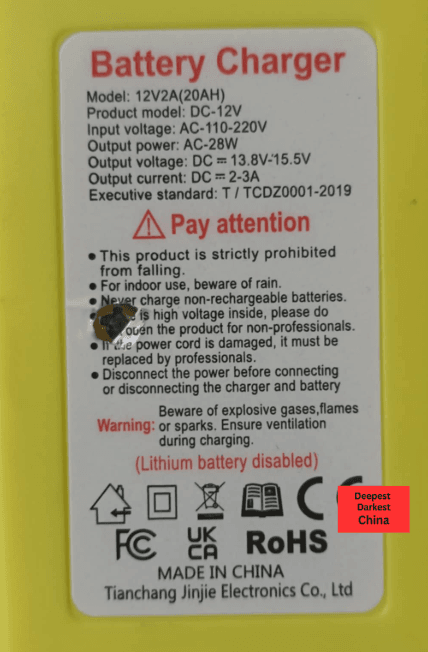
On both sides of the device we have a good ventilation cutouts. The design is 100% passive and 100% not waterproof. The sticker was factual when it said ‘beware of rain’!
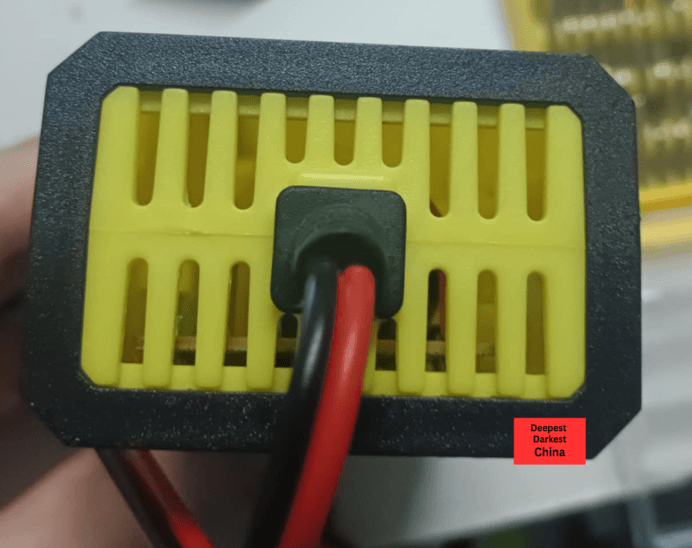
Charging Performance
Upon hooking up the yellow ‘Air Fryer ShopAAA 2A battery charger’ in, it was the moment of truth!
Immediately upon connecting the charger, it showed signs of life with the battery charge LED’s cycling up.
When testing with a multimeter on DC, it indicated a charge rate of 1A DC, while this is not the claimed 2-3A advertised, due to the PWM design of the circuit, the instantaneous (peak) charge rate may be higher.
During operation the charger is warm to touch, but not hot.
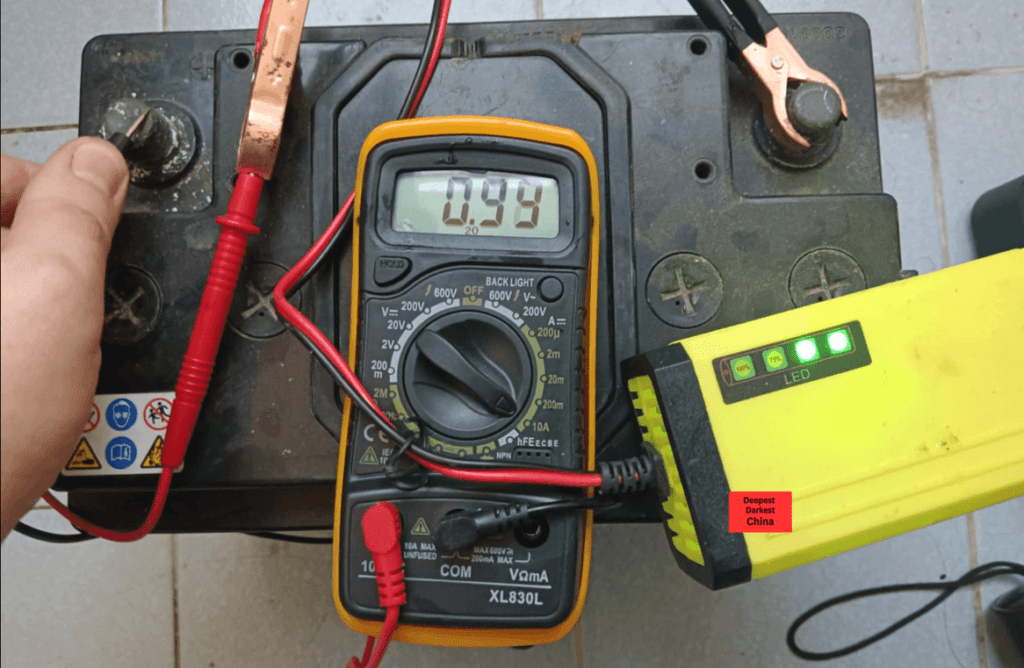
After leaving the charger to do its thing on the balcony for 24 hours in ignorant bliss, I was greeted with the succulent smell of hydrogen sulfide and a warm to the touch battery, indicating the battery charger might not be as smart as I had hoped.
While the battery was showing full, the charger was still pumping nearly the same current into the battery as when we started.
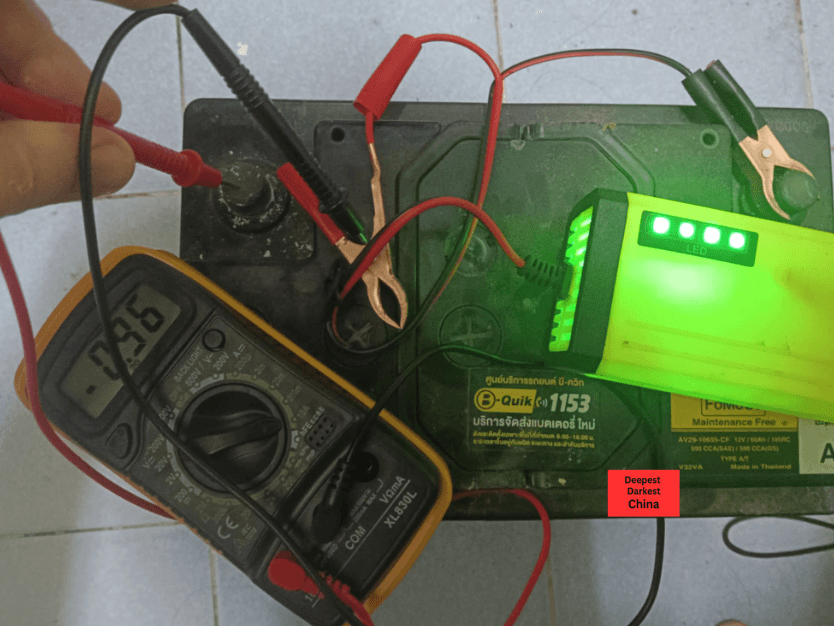
If you are game enough to purchase this charger, ensure the charger remains supervised and is not left ‘trickle charging’.
Between you and me, the only thing accurate about the marketing for the ‘smart chip’ is the title ‘Thunder currentfast flash charge,’ which I assume is the term used for the catastrophic event that occurs when the battery explodes on my balcony due to overcharging.

Protections or Lack Of
While the charger may have overcharged the battery, perhaps I was too quick to judge it harshly as this wasn’t an advertised protection according to various other listings.
Thanks to its vented sides, ‘over-pressure protection’ is still very likely a valid claimed feature in the event of a battery explosion.

Reverse Polarity Protection
Being such a top quality reviewer and putting everything on the line ($3.10), it is time to test the reverse polarity protection.
Pretending to be a colour blind id**t which apparently isn’t too hard to imagine according to my partner, in the name of science I adopted the safety squint and connected the ‘Air Fryer Charger’ up backwards.
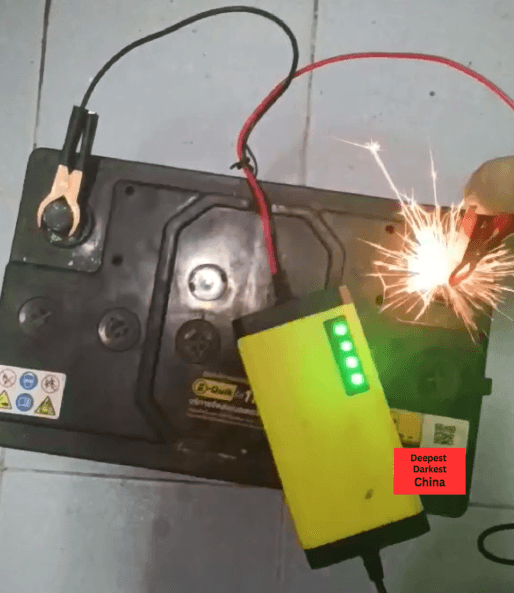
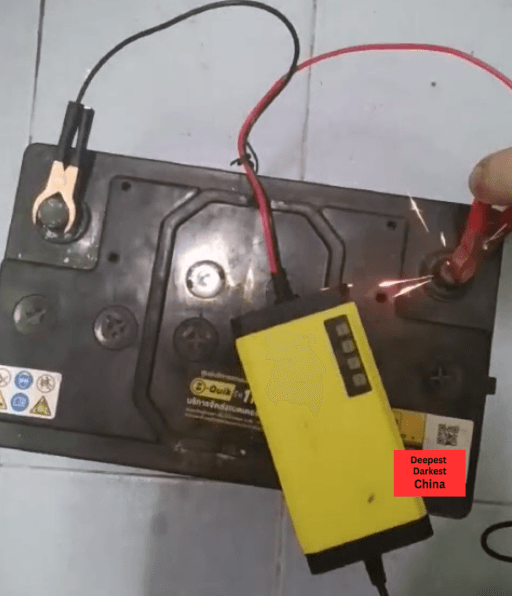
The mighty charger did not like this and no longer powered on. On that note, onto disassembly.
Internals
Having successfully blown up the charger, the device comes apart relatively easy by unclipping the black end caps and removing a small hidden phillips screw under the sticker.
Using my ‘Introduction to Electronics’ level of knowledge we will attempt to see how this circuit works. If you more, leave a comment below.
Top of PCB
On the top of the PCB we see can see the AC input on the bottom left, some filter capacitors, a transformer, the some capacitors, transistor, diode and finally the 4 LED’s.
One interesting observation is the fuse remains unpopulated, so essentially the circuit is the fuse!
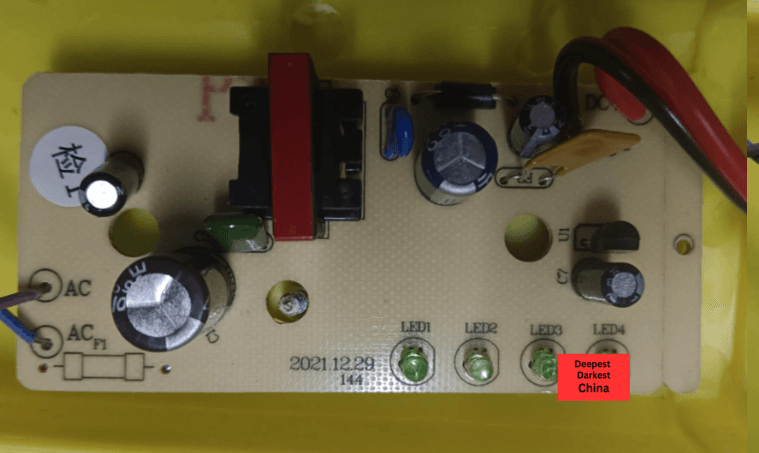
Bottom of the PCB
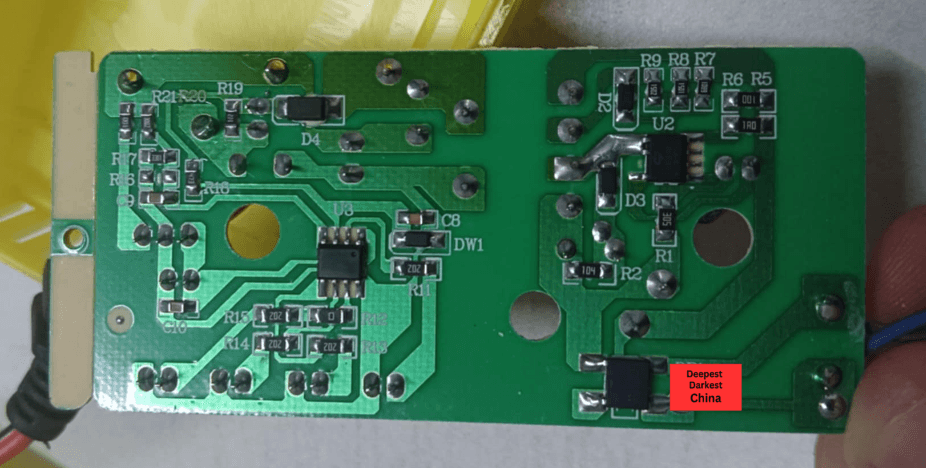
On the bottom we have a far better idea of what’s going on. From first impressions it looks like a typical switch mode power supply
- On the very right, we see the AC being feed into a Bridge Rectifier chip to generate pulsed DC
- Filtering to smooth this out is performed using the two electrolytic capacitors
- The unknown IC appears to be a PWM controller surrounded by various resistors and diodes for presumably a voltage/current feedback loop for regulation.
- These high frequency DC PWM pulses are sent through the high voltage side of the transformer to the electrically isolated low voltage side of the PCB
- It’s hard to know what the IC is, but appears to be very involved with the charge status for the LED’s.
- Additional low voltage DC capacitors to filter the DC output into the battery and monitoring circuit
With my limited understanding of the circuit’s inner details, it seems to be a well-designed, regulated switch-mode power supply for its low price. It’s well suited for charging a lead-acid battery at 1-2 amps. While it’s unclear what protections it offers, its functionality is spot-on as long as it’s hooked up correctly and unplugged when finished.
Conclusion
Let’s be honest, for under the cost of a coffee, the ‘Mystery Yellow 12V 2A charger’ does very well and offers incredible bang for the buck. While it may happily charge up a motorcycle or car battery at a safe rate under careful supervision, you really should invest a little more into an electrical appliance that doesn’t have as dubious safety measures.
If you are after a trickle charger that you can trust not to burn down your house or cook your battery if left on overnight, I would still recommend a CTEK such as a CTEK 0.8 for motorbikes or CTEK MXS 5.0 for car sized batteries. I’ve been using them for nearly a decade and they will last a lifetime.
If you are are still on a tight budget, maybe increase your budget to NEXPEAK NC201 which is probably one of the best rated chargers for under $50 on Amazon.
What’s Hot
- Ultra Low Cost
- It works (or did)
- No Fan
- Good light show if plugged in backwards
- Decent circuitry for the price
What’s Not
- No Top Of Charge Shutoff
- No reverse polarity protection
Price: ~USD$3.10
Date of Review: January/ 2025
Rating: ⭐⭐ (2 stars – Please don’t buy this!)
Did you enjoy this review? What should I review next? Leave a comment below


